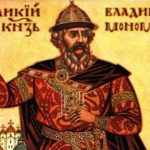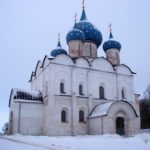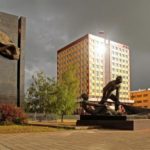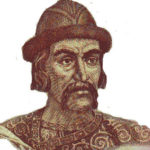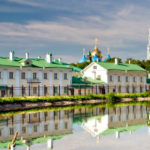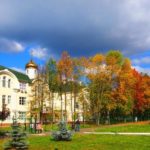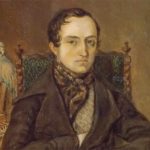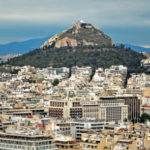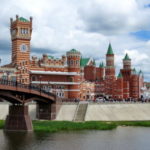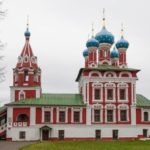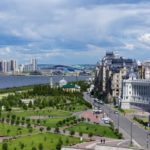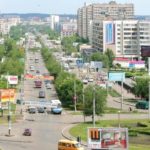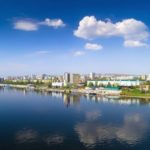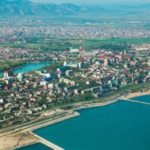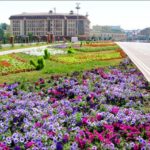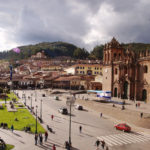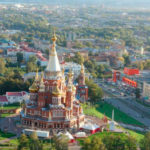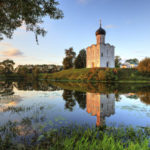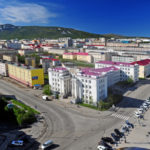Interesting facts about the city of Vladimir
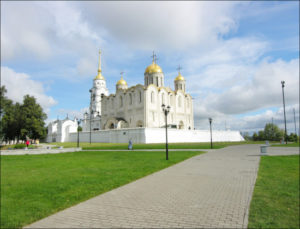 City of Vladimir – albeit small, but extremely famous. It is part of the famous “Golden Ring” of Russian cities, and for good reason – there are not many places where you can see as many historical objects as here. However, not far from Vladimir is Suzdal, which is no less interesting. In both these cities you can usually see a lot of foreign tourists who come to personally admire the ancient temples.
City of Vladimir – albeit small, but extremely famous. It is part of the famous “Golden Ring” of Russian cities, and for good reason – there are not many places where you can see as many historical objects as here. However, not far from Vladimir is Suzdal, which is no less interesting. In both these cities you can usually see a lot of foreign tourists who come to personally admire the ancient temples.
Vladimir is one of the most popular cities among tourists visiting the European part of Russia.
Prince Vladimir Monomakh founded a city named after him, around 1100. According to another common version, the city is much older, and was laid back in 990.
For several centuries, Vladimir was at first the actual, and then the nominal capital of Russia.
In Vladimir, preserved three monuments of architecture, built before the Mongol-Tatar conquest: the Golden Gate, the Assumption and Dmitrievsky cathedrals. In total there are 239 buildings in the city, protected by the state – most of them were built in the XVIII-XIX centuries.
Uspensky Cathedral is one of the few churches in Russia, where the painting of the work of Andrei Rublev was preserved. In honor of the outstanding icon painter in Vladimir, a bronze monument was erected.
The famous Golden Gate in Vladimir – the only remaining entrance to the city of the seven existing. The gate was not only a protective function, but also a triumphal arch, richly decorated with gilded copper.
During the Second World War, 18 hospitals were evacuated to Vladimir, which made it one of the most important cities in the rear. Volodymyrs surrendered about 40 thousand liters of blood to save wounded fighters.
In 1971, Vladimir, who became a major industrial center, was awarded the Red Banner of Labor.
The Trinity Church in Vladimir, where the exposition of the Crystal Museum is now located, is one of the main churches of the Old Believers in the European part of Russia.
On the City Day in Vladimir, the traditional procession “Three capitals of Great Russia” is held – its participants are in historical costumes (and some even jump on horses) from the Golden Gate to Cathedral Square.
There is a legend according to which Empress Catherine II, during one of the visits to Vladimir, could not enter the city through the Golden Gate – either the Empress was afraid to drive under the arch, which was in a deplorable state, or the five-meter-wide gate was not enough for her carriage. The Empress ordered to restore the famous arch and to tear down parts of the ramparts that approached the Golden Gate, so that henceforth anybody could easily get to Vladimir.
The original alignments of the Golden Gate (which were indeed covered with gold) were removed and taken away in an unknown direction by the Mongol-Tatar invaders. According to one version, the gates were drowned in the Klyazma River, and since then dozens of unsuccessful attempts have been made to find this treasure. Japanese specialists offered at their own expense to clean the bottom of the river, but with the condition that all the finds will get to them. The Soviet authorities responded to this proposal with a refusal.
In Vladimir there is a “haunted house” – this building, built in the late 18th century, where the exhibition hall is now located. Because of a mistake in the calculations when creating the project, voids formed in the walls of the house, and the stone building began to “talk”.
In Vladimir there is a well-known correctional institution – Vladimirsky central. According to official data, not a single prisoner managed to escape from there.
Local residents call the bypass road around Vladimir, which is part of the M-7 highway, “Pekinskaya”. It is believed that the highway was supposed to be completed before Beijing, but then the friendship between the USSR and China weakened, and the project remained on paper.
